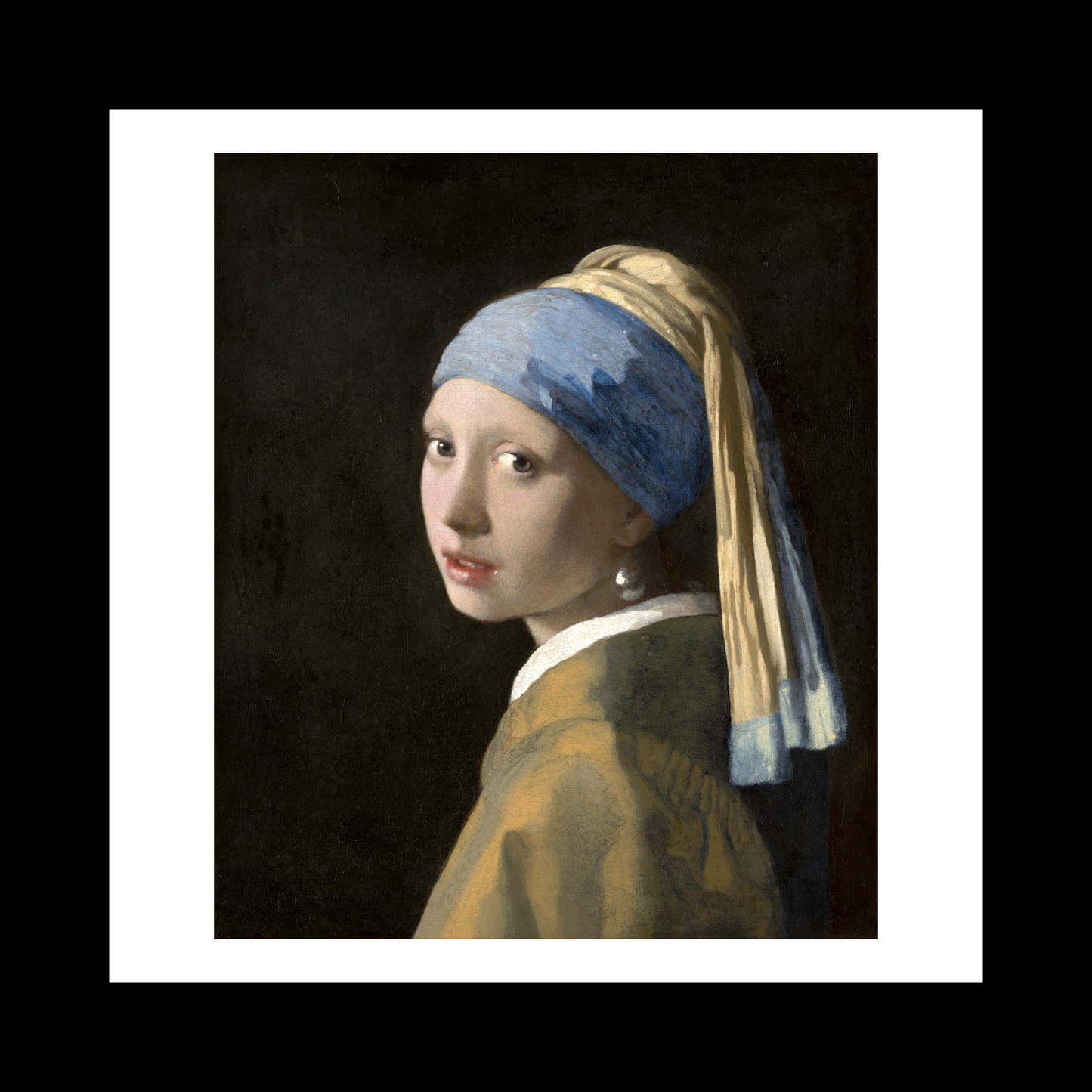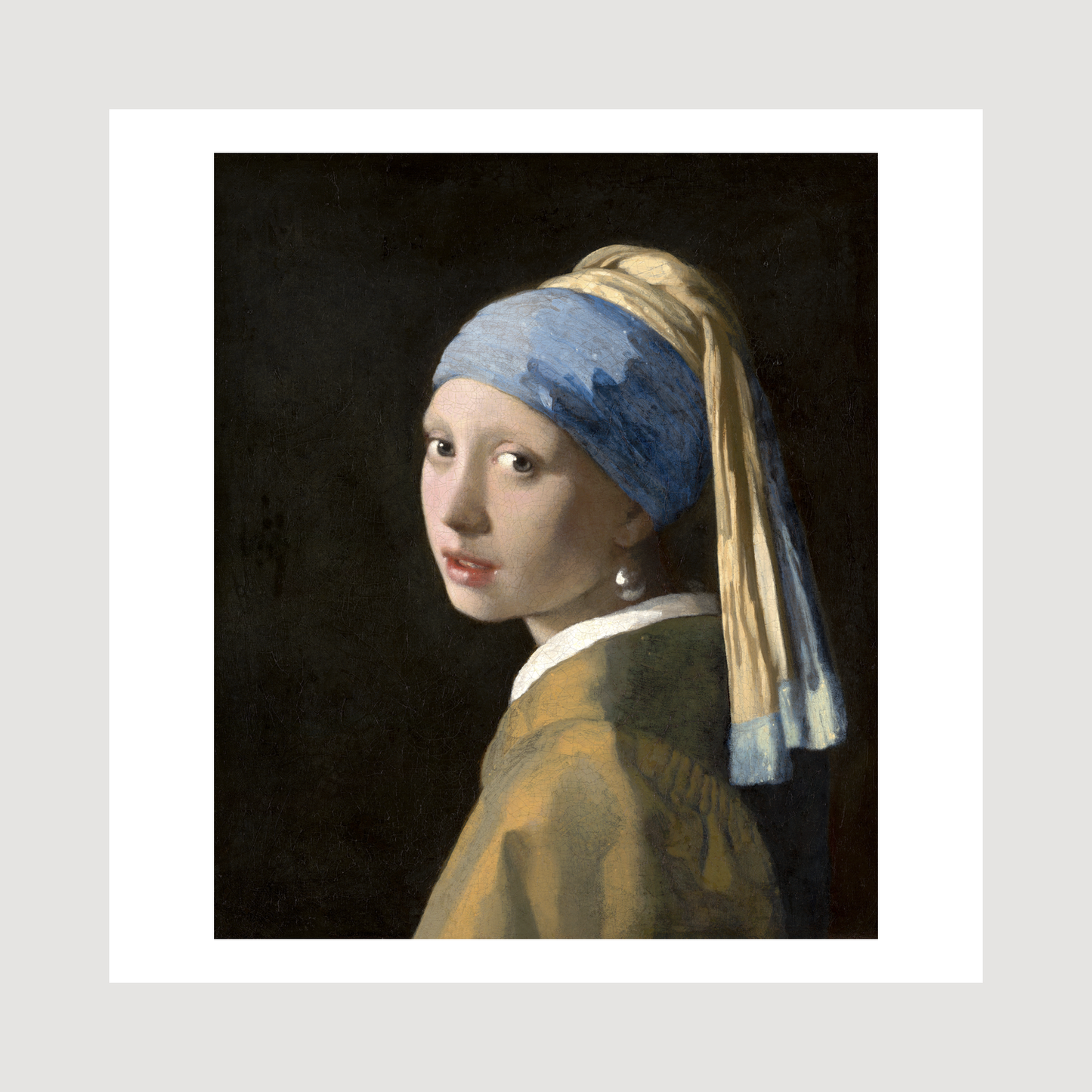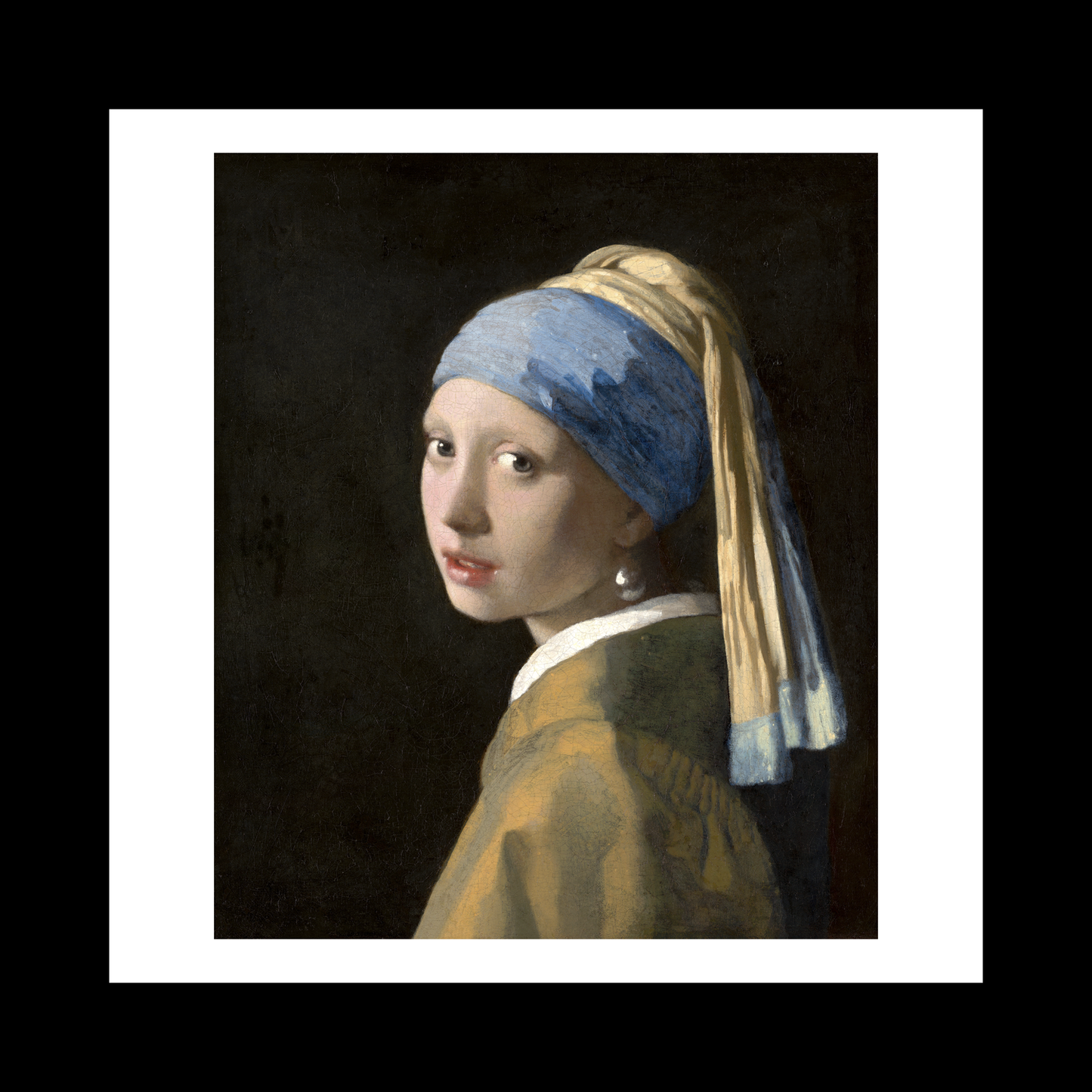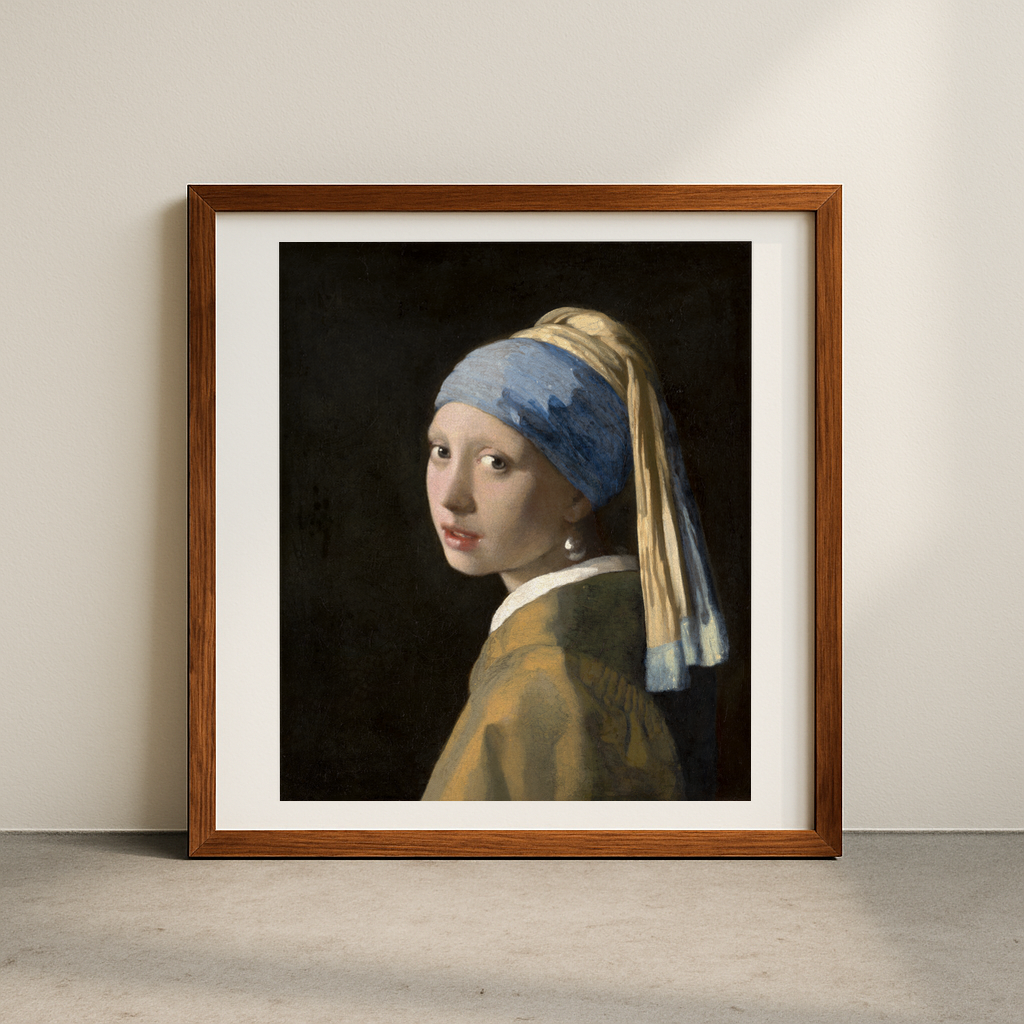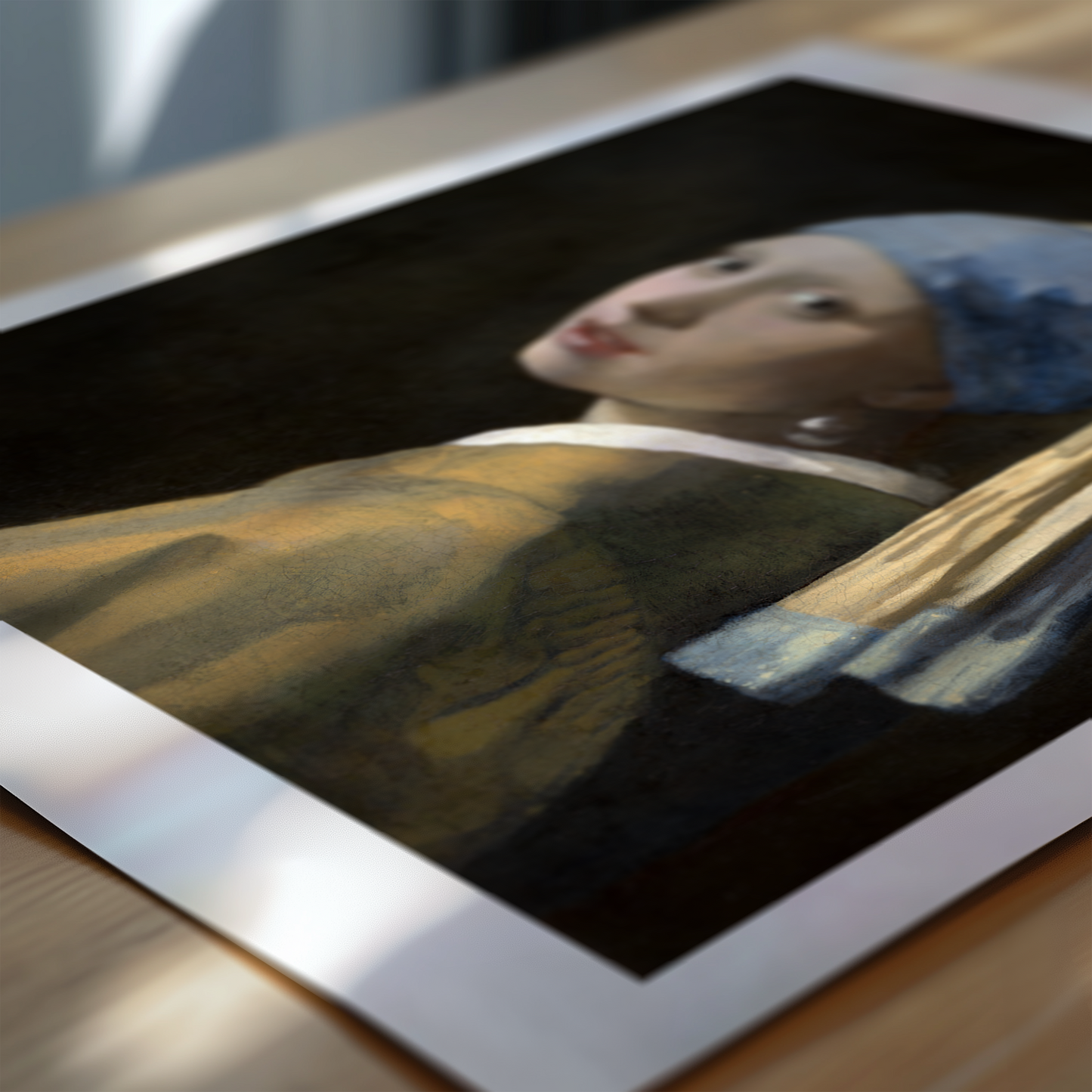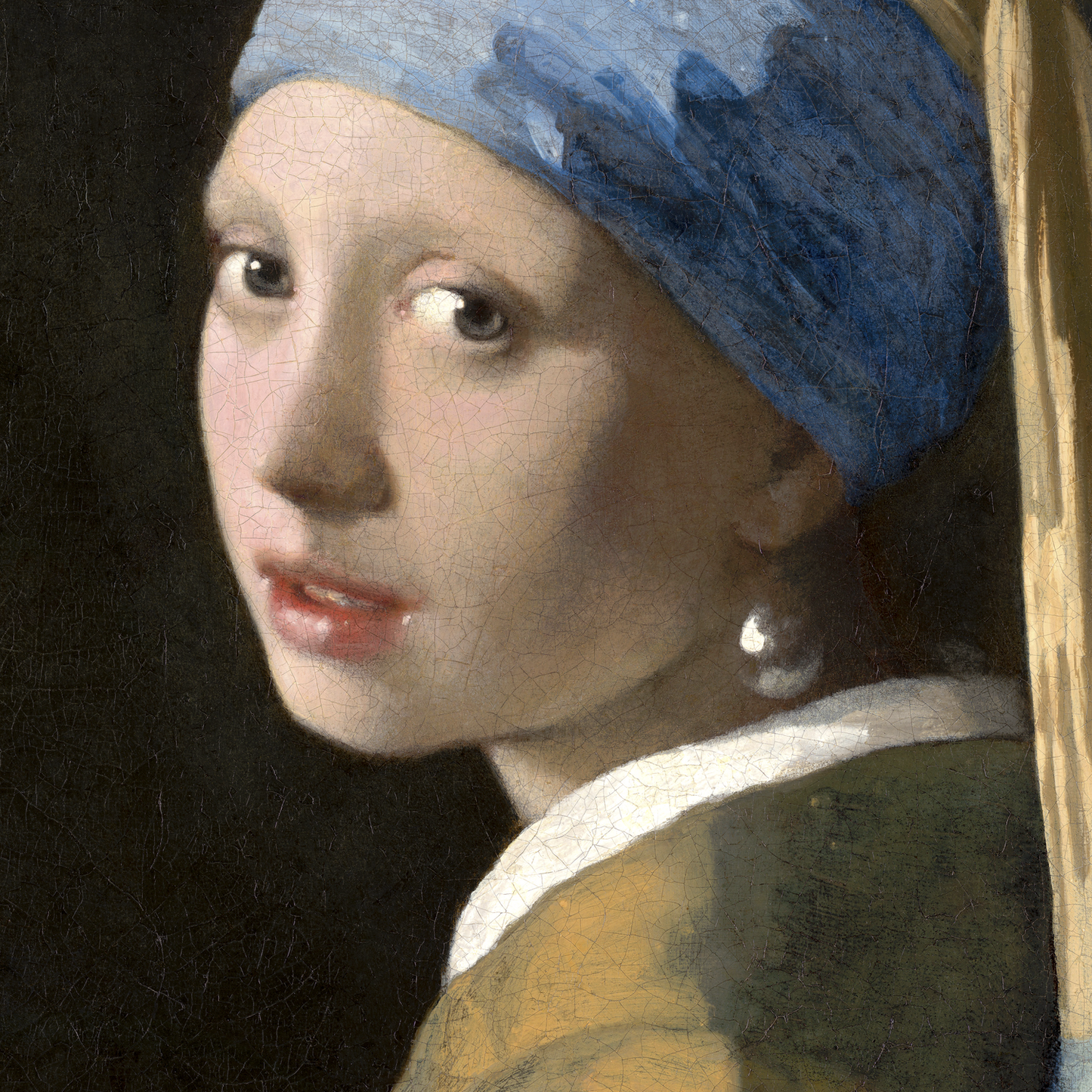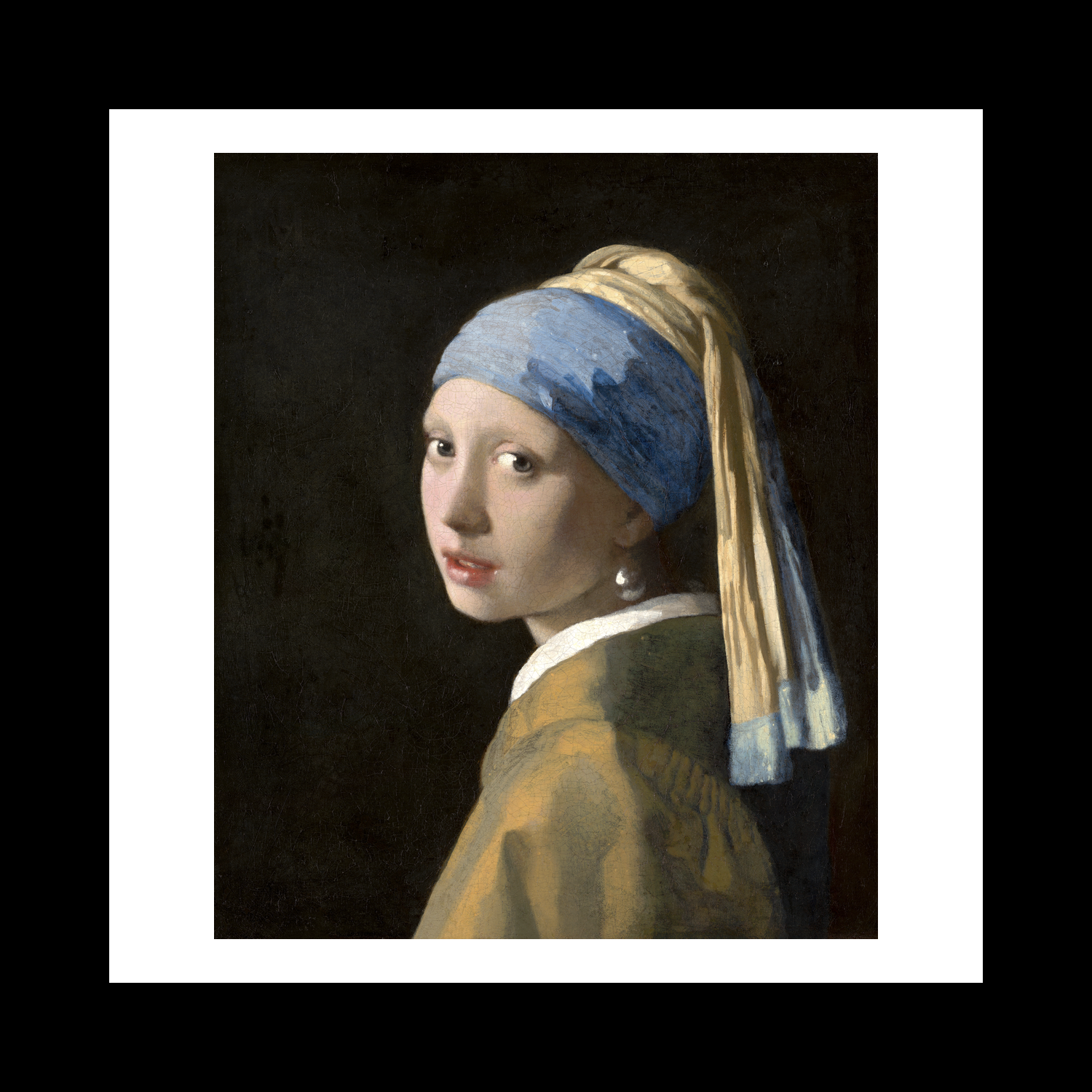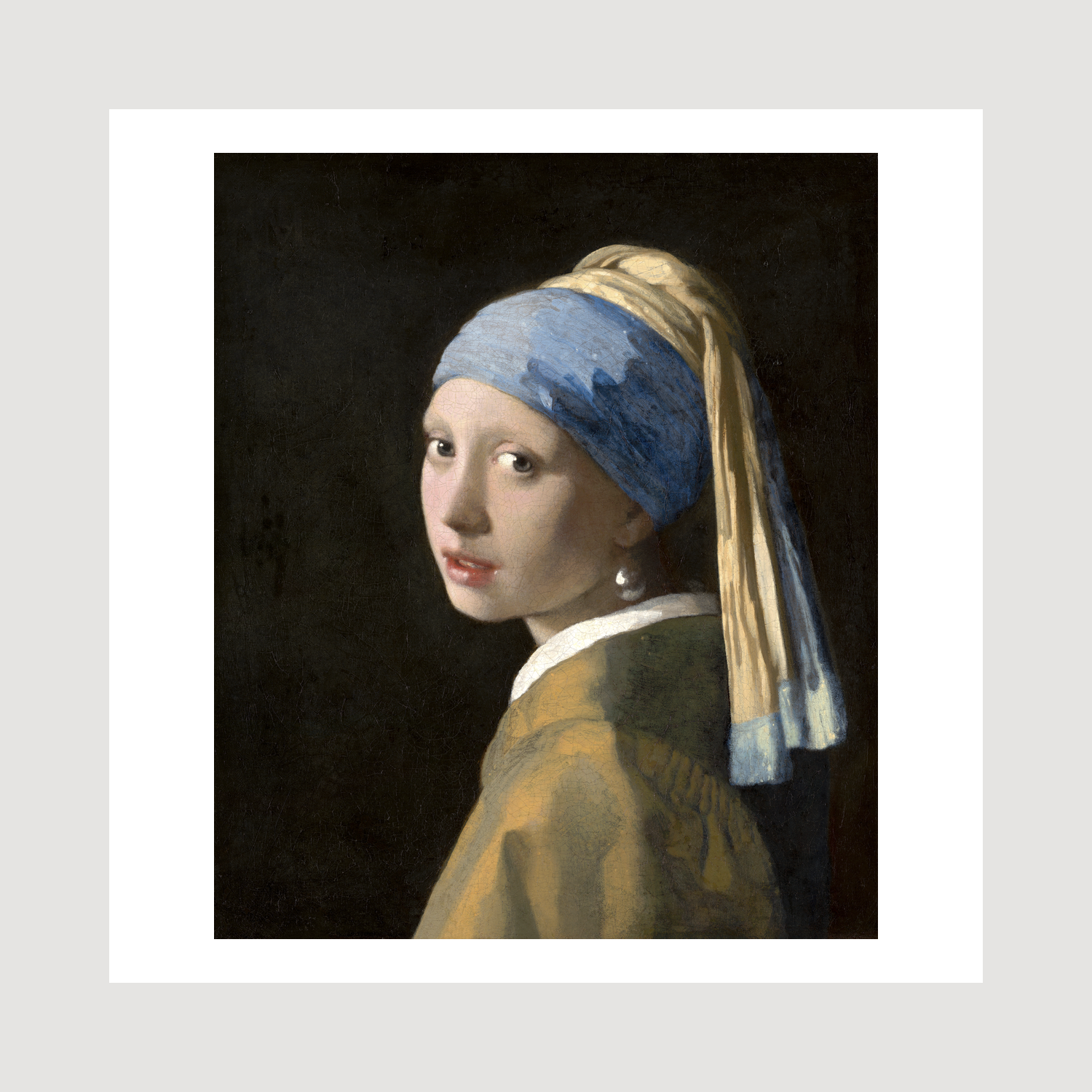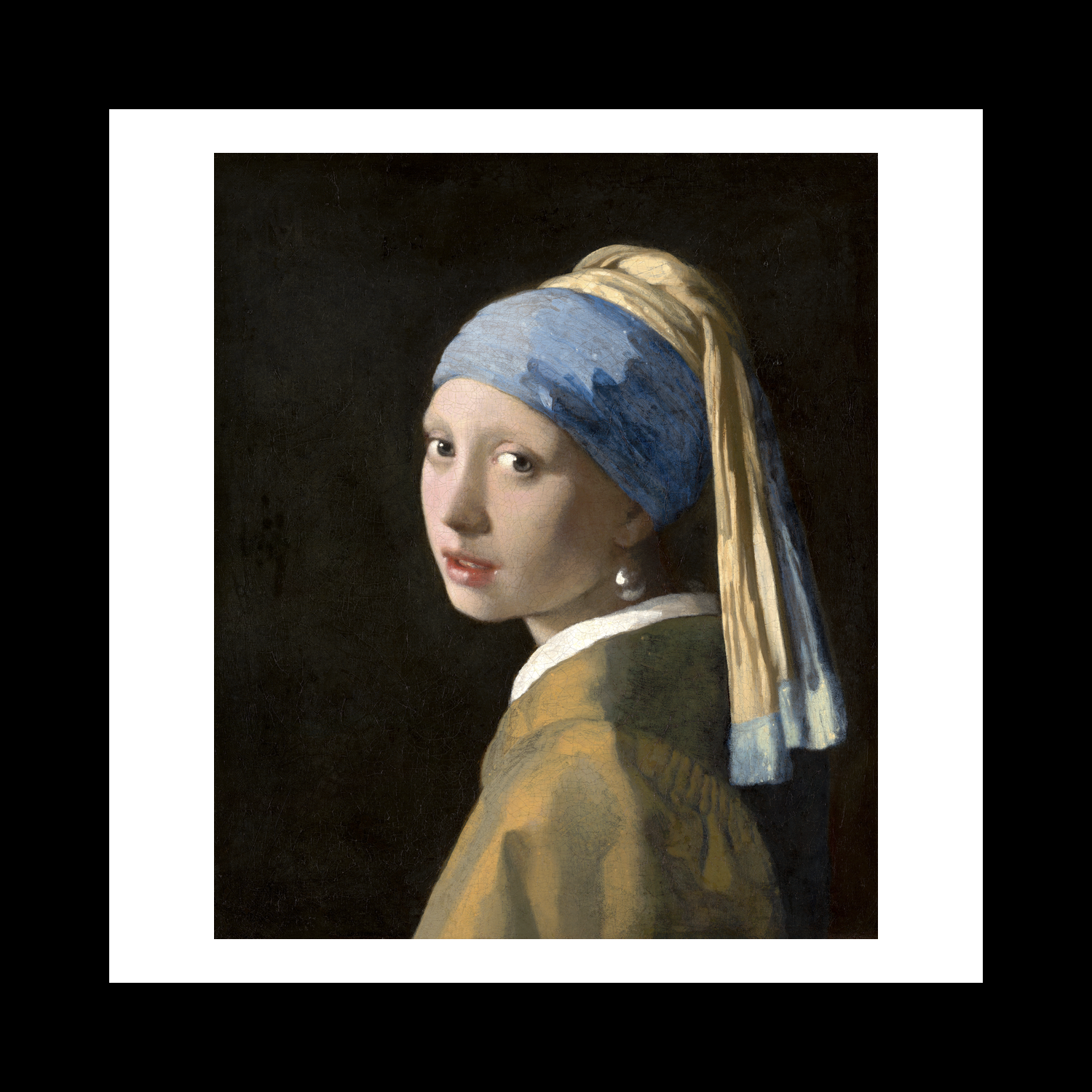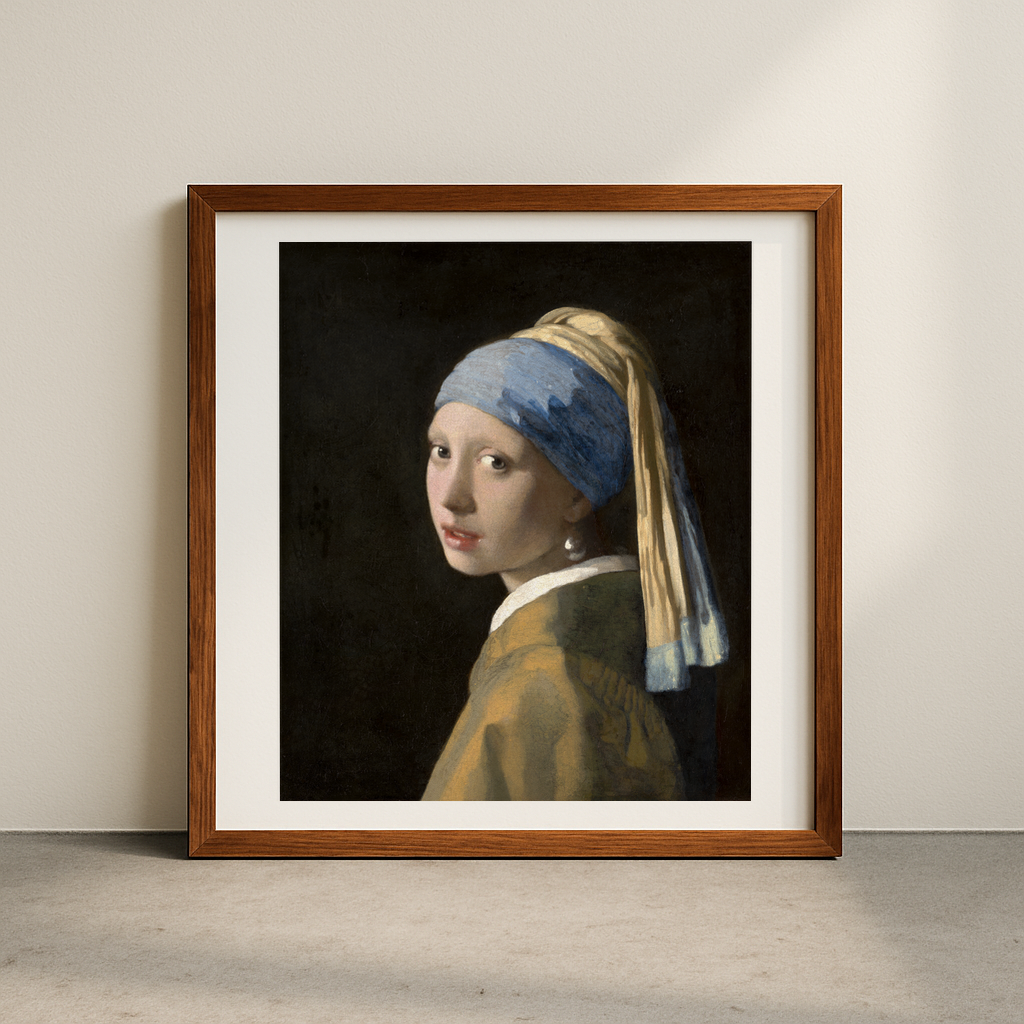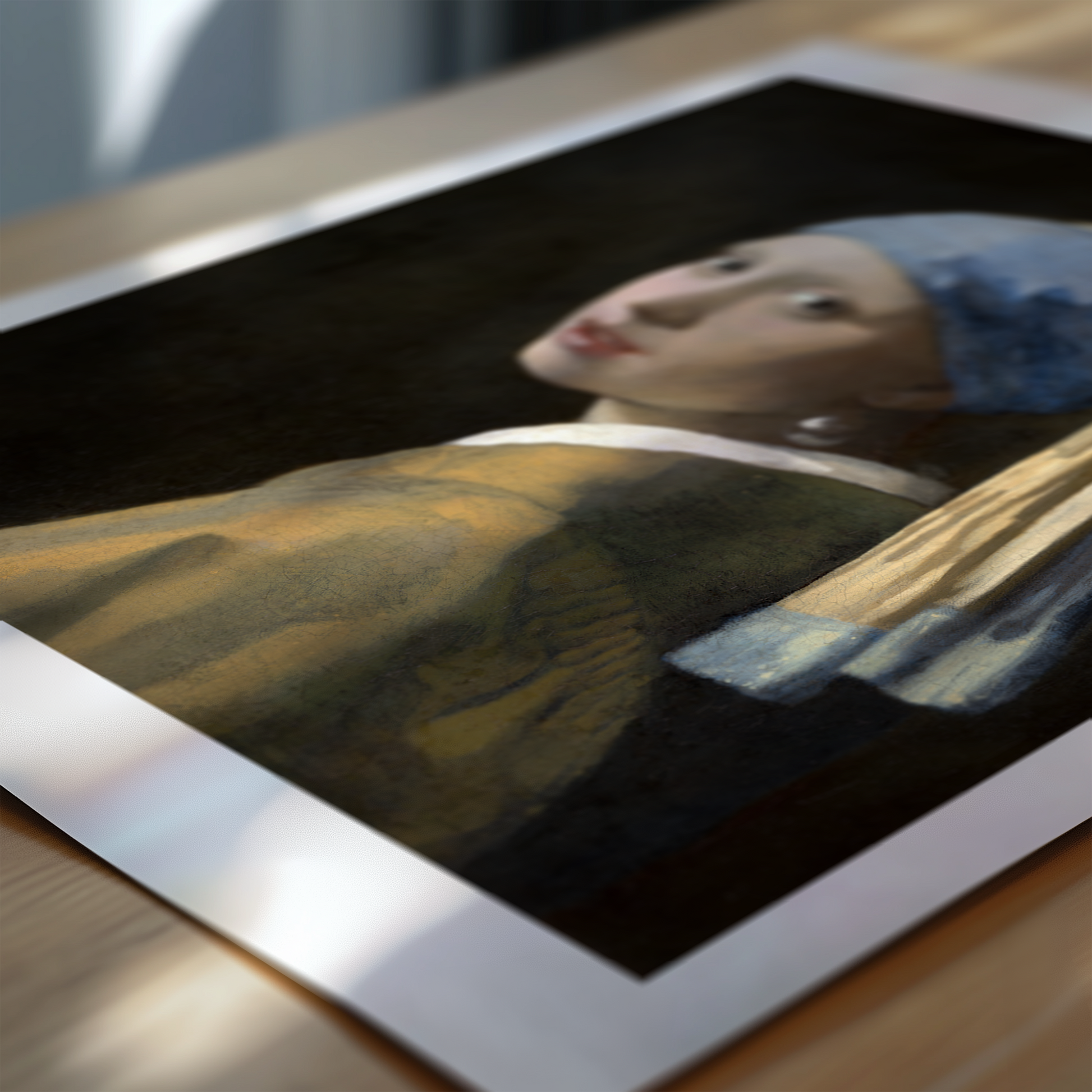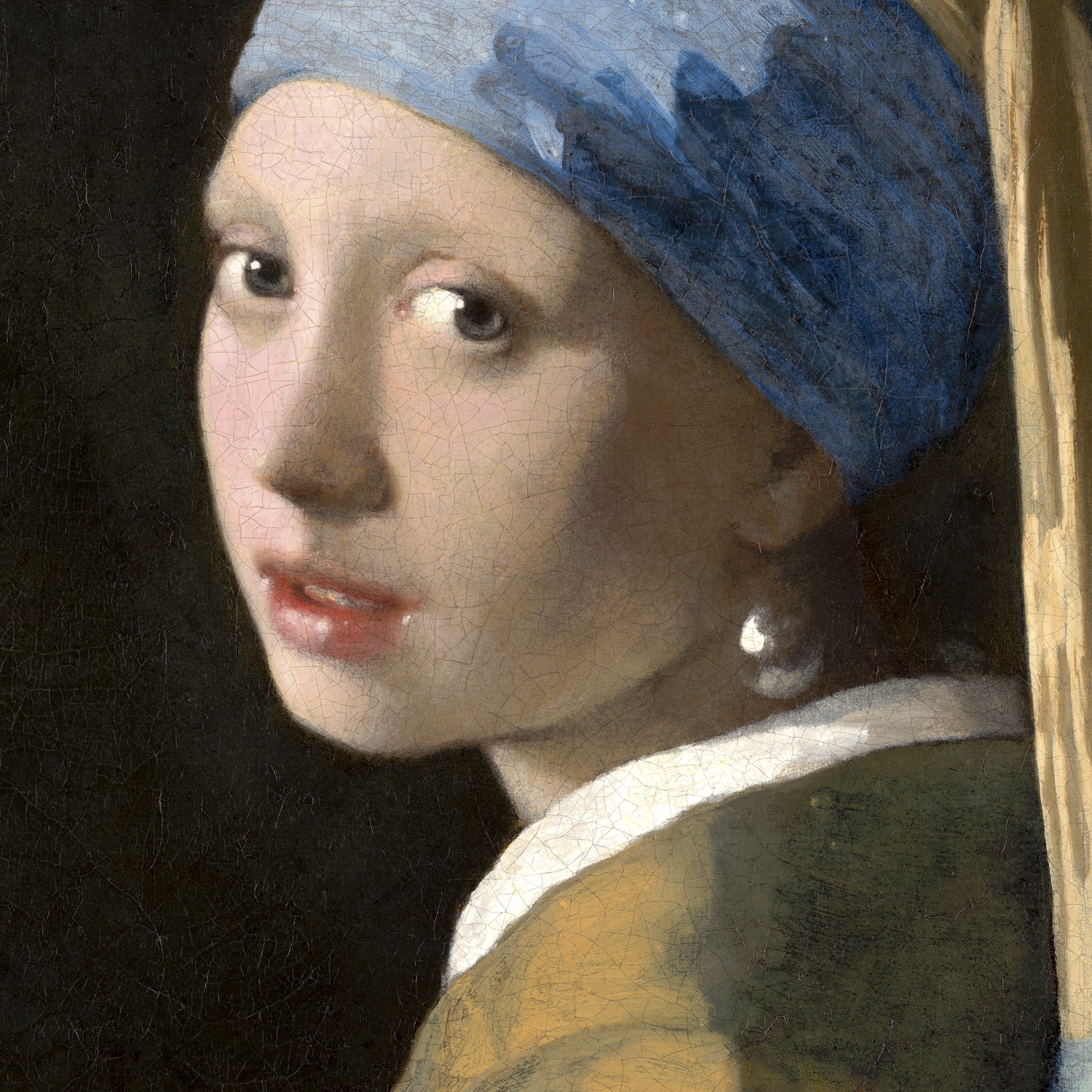1
/
of
6
Girl with a Pearl Earring (1665)
Girl with a Pearl Earring (1665)
Regular price
£12.45 GBP
Regular price
Sale price
£12.45 GBP
Taxes included.
Quantity
Couldn't load pickup availability
"Girl with a Pearl Earring" stands as one of Johannes Vermeer's most captivating works, showcasing his mastery of light and intimate portraiture. The painting depicts a young woman glancing over her shoulder, her face emerging from a dark background in Vermeer's characteristic chiaroscuro style. The subject's exotic dress - a blue and yellow turban and a lustrous pearl earring - creates an air of mystery and allure, while her penetrating gaze draws viewers into an eternal moment of connection.
Vermeer's technical brilliance shines through his use of light, particularly in the soft glow on the girl's face and the gleaming pearl. His application of paint layers and glazes creates a luminous quality that seems to make the subject's skin radiate from within. The composition's simplicity - positioning the girl slightly off-centre against a dark background - emphasises the interplay between light and shadow, demonstrating Vermeer's understanding of optical effects.
Created during the Dutch Golden Age, this work reflects both the period's prosperity and Vermeer's unique approach to painting. Unlike many contemporaries who focused on wealthy patrons, Vermeer often painted ordinary moments and subjects with extraordinary attention to detail. The identity of the girl remains unknown, adding to the painting's enduring intrigue. Some scholars suggest she might have been Vermeer's eldest daughter, Maria, while others believe she was a servant in his household. This mystery, combined with Vermeer's exceptional technique, continues to captivate audiences and inspire artistic discussions centuries later.
The artist's choice to paint the subject in an 'exotic' costume was typical of the tronie genre - a style of Dutch Golden Age painting featuring characters in elaborate dress or unusual expressions. This particular work exemplifies Vermeer's ability to transform a simple portrait into something transcendent through his masterful handling of paint and light.
View full details
Vermeer's technical brilliance shines through his use of light, particularly in the soft glow on the girl's face and the gleaming pearl. His application of paint layers and glazes creates a luminous quality that seems to make the subject's skin radiate from within. The composition's simplicity - positioning the girl slightly off-centre against a dark background - emphasises the interplay between light and shadow, demonstrating Vermeer's understanding of optical effects.
Created during the Dutch Golden Age, this work reflects both the period's prosperity and Vermeer's unique approach to painting. Unlike many contemporaries who focused on wealthy patrons, Vermeer often painted ordinary moments and subjects with extraordinary attention to detail. The identity of the girl remains unknown, adding to the painting's enduring intrigue. Some scholars suggest she might have been Vermeer's eldest daughter, Maria, while others believe she was a servant in his household. This mystery, combined with Vermeer's exceptional technique, continues to captivate audiences and inspire artistic discussions centuries later.
The artist's choice to paint the subject in an 'exotic' costume was typical of the tronie genre - a style of Dutch Golden Age painting featuring characters in elaborate dress or unusual expressions. This particular work exemplifies Vermeer's ability to transform a simple portrait into something transcendent through his masterful handling of paint and light.
